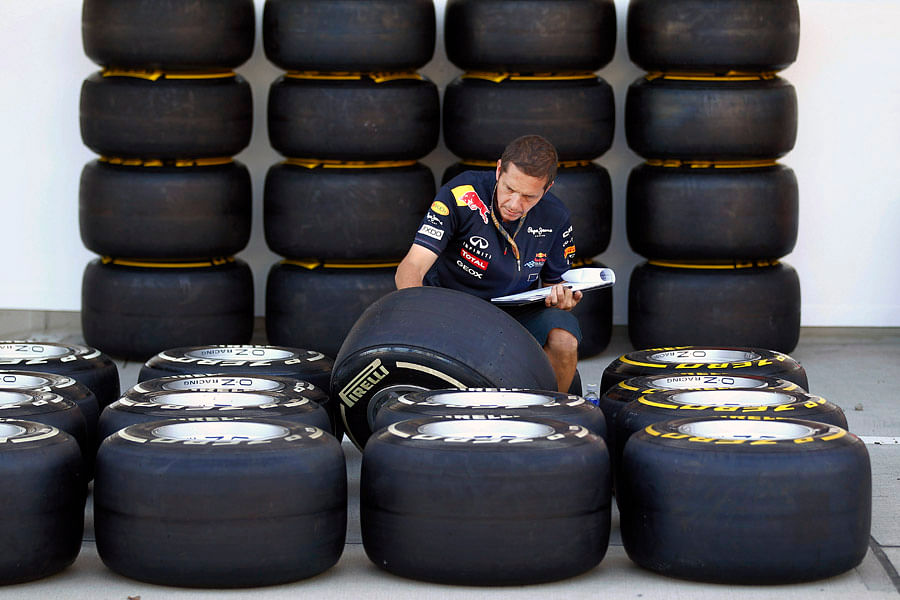
Why do drivers, teams and commentators make such a big deal about Formula 1 car tyres? Why all the noise about soft, medium, hard compounds and endless talk on which will suit a particular track?
The answer is simple. The tyre is the only part of the car in contact with the tarmac surface. All the power generated by the engine and associated systems is of no use if the car does not have grip to translate it to speed. Grip is an integral part of racing since it determines how fast the car can go in and out of a corner without losing control.
Formula 1 tyres are built for performance rather than longevity. Street car tyres will last about 15,000 Km, but the life of an F1 tyre is between 60 and 120 Km. Since they are built for extreme performance at high speeds, the rubber wears off in no time. This is why team personnel rack their brains to change the tyres at the appropriate moment of the race and in minimum time. A pit stop to change tyres can make or break a driver’s race.
Street car tyres are steel reinforced within the rubber, while F1 tyres have a nylon and polyester base structure that enables them to handle heavier loads and forces. Due to the huge forces, the wear is very high and the rubber gets lodged on the track surface. This is not a bad thing since both help in getting more grip. That is why cars will not have much grip on a new or resurfaced track. Once a couple of practice sessions are over, the track gets a bit of rubber from the tyres and grip improves.
Even before the practice session, qualifying round or race starts, the tyres are wrapped in heated covers or tyre blankets. The blanket temperature is kept the same as the track temperature. They are heated because a cold tyre will have little grip.
‘Slick’ tyres were introduced into F1 racing in the late 1960s. Slick tyres do not have any grooves or patterns on them. Due to this, more surface area is in contact with the track surface and the result is better grip.
Slicks were used till 1997. From the next year, grooved tyres were mandatory in order to reduce cornering speeds. Slick tyres were reintroduced in the 2009 season.
Pirelli is the current supplier for all teams. In the past, Michelin, Bridgestone, Goodyear, Firestone, Continental, Avon, Englebert and Dunlop have supplied tyres.
The 2018 season had the hypersoft (pink), ultrasoft (purple), supersoft (red), soft (yellow), medium (white), hard (blue) and superhard (orange) dry weather tyre range.
Pirelli will now supply only three colours in 2019. The hypersoft, ultrasoft and supersoft are gone and each race will have only a white-marked hard tyre, a yellow-marked medium and a red-marked soft. The compound will still vary with C1 being the hardest and C5 the softest.
Intermediate tyres (green stripe) are for damp conditions, while wet weather tyres (blue stripe) are for very wet conditions.
Select compounds are allotted for each race and the team has to use them. Harder compound tyres are allotted for races where the temperatures are high (Malaysia and Singapore for example) and softer compounds will be used in cold conditions (in places like France and Belgium).
Formula 1 tyres do not use ordinary air for inflation. A nitrogen-rich mixture is used. This reduces variations in tyre pressure as it heats up. It also retains tyre pressure longer. It will be surprising to know that the typical air pressure of an F1 car tyre is in the range of 20 to 23 psi, while street car tyres will not have anything less than about 28 psi.
Wheel rims are typically made of magnesium alloys.